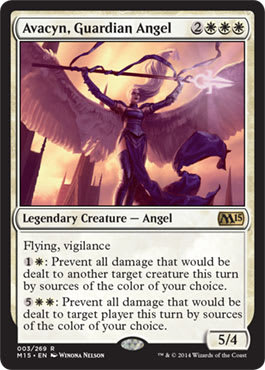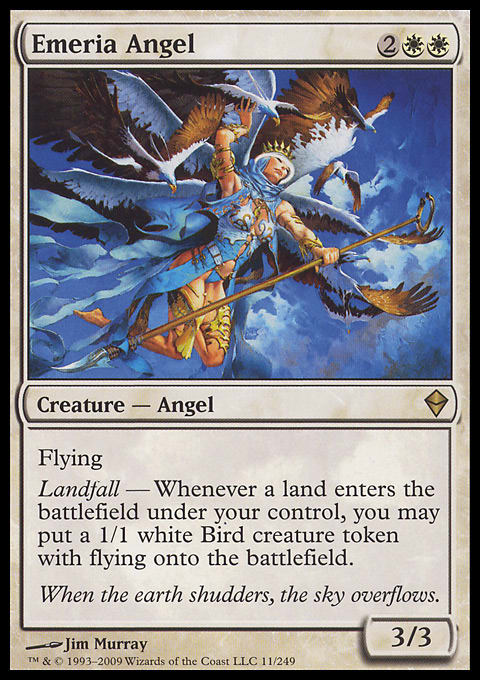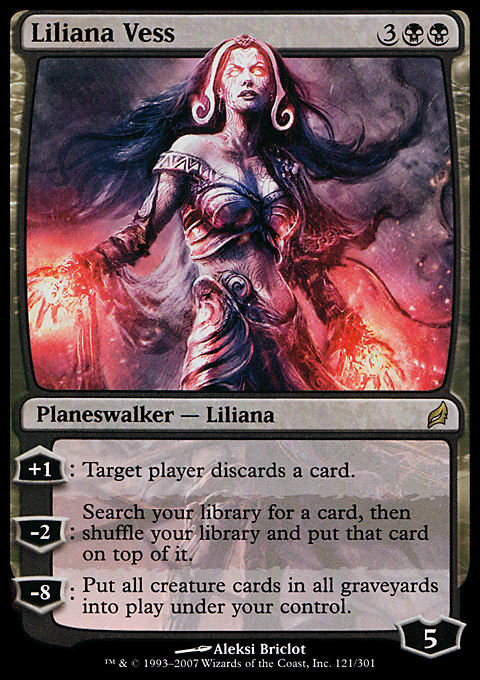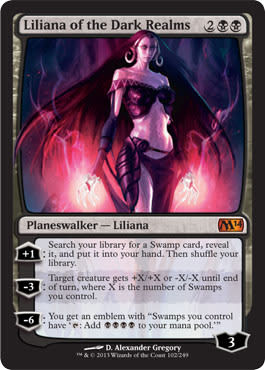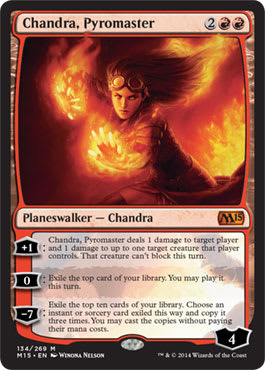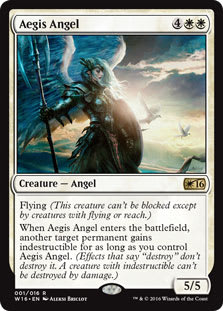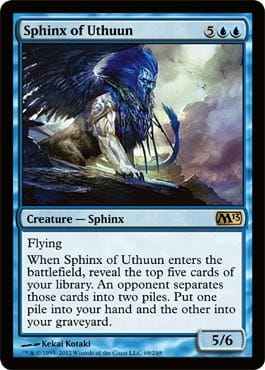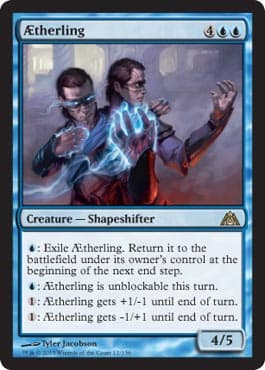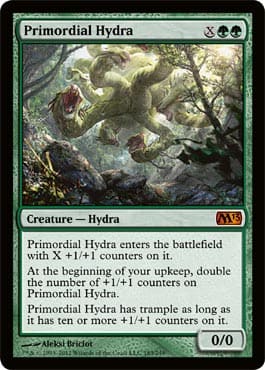Two weeks ago, while I was delving into how the absence of flavor adds its own unique taste to Magic, I gave a brief overview of what it means to be an iconic creature for those of you who might not have been as familiar with the term. What I had not planned on was that in doing so, I would spark a conversation in my brain. That conversation would build into an argument, before erupting in an all-out civil war . . . Many brain cells died to bring you this article. In today’s article, we are going to revisit the idea of an iconic creature in Magic.
What’s an Iconic?
Before we move any further, it is important to understand what it means to be an iconic creature in Magic-ese. In Mark Rosewater’s “Building a Better Monster” article, he discusses the idea of an iconic and how R&D arrived at the five creatures as we know them today. If you have not read this article by Mark beforehand, I suggest you check it out before continuing. I like to think of the iconics as “the pinnacle type of creature you could summon in each respective color.”
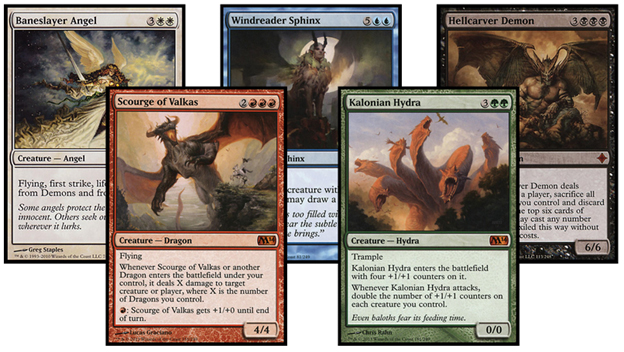
. . . Or at least, that is how I used to think about them. For the past few weeks, I have been wrestling with the idea that this line of thinking may in fact be wrong, and it’s all because of pie.
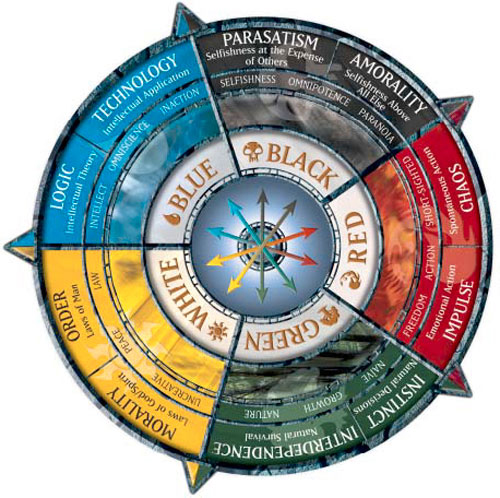
The color pie is a glorious piece of technology, meant to represent both the mechanical and philosophical aspects of our five beloved colors. Each color encompasses a wide range of abilities and emotions—or creatures and lines of thinking—that help to define that color within the game. In establishing each iconic, R&D attempted to name a single creature that would serve as the poster child for a particular color, dragons in red being a great example. As Mark points out in his article linked above, the dragon was picked as red’s iconic because it served as a symbol of both red’s desire for freedom (Dragons will never be tamed, Khaleesi) and a symbol for fire. But I would counter that statement by saying that red is much more than just freedom and fire. Red is about passion and impulse, emotion and violence, the earth, and destruction, and gambling. This brings me to my first point:
- Some iconics can be too narrow.
If we were to look at blue’s iconic creature, the sphinx, we would see a perfect example of a being that encompasses the importance of knowledge and intelligence. But this is just one small aspect of what blue is capable of. Blue has mastery over wind, water, ice, and magic. Blue can unsummon enemies and control the mind. Blue is a master of stealth and deception—all of these traits and more could make for excellent mythic creatures, and yet, they would not feel at home on a sphinx. Dragons and hydras suffer from similar problems, in that they are great representations of individual aspects of their colors, but they would feel somewhat out of place if they were given abilities that reflected a different aspect of their respective color’s pie. Imagine, if you will, a Sphinx that didn't come with a riddle and instead was themed to be an ice creature that froze your enemies, or a dragon that didn't breathe fire and instead allowed you to gamble with your hand. Imagine a hydra that didn’t grow and instead caused you to ramp your mana. All of these creature abilities are no less “iconic” than riddles or fire-breathing or growth, but they would feel strange on the current iconic creatures that are printed set after set. Point two:
- Some iconics can be too broad.
White and black’s iconic creatures—or the angel and demon, respectively—suffer from the opposite problem. If I were to ask you what a sphinx does in Magic, chances are you would say it is a large, flying creature that has some sort of riddle-like ability. If I were to ask you what an angel does in Magic, you would probably tell me it was a large white creature with flying, and you may even say that it has vigilance. Beyond that, the abilities that an angel can have in white cover the entire spectrum of the color’s pie slice. There are protective angels, healing angels, angels that are about war, angels of balance, even angels that produce birds.
There isn’t really any mechanical definition to what angels can or cannot do beyond the fact that they are relatively large and can fly. Now you may be thinking, “Isn’t that a good thing? Aren’t angels (and, to a lesser degree, demons) doing what sphinxes and dragons and hydras cannot?” To answer that, we can look toward similar cards to the iconic creatures, the Planeswalkers, and more specifically, we can look at the Lorwyn five:
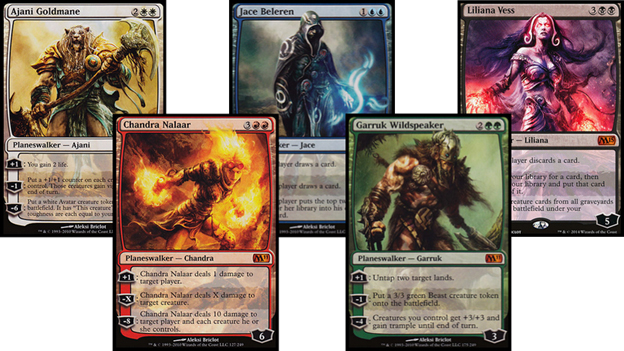
Each of these Planeswalkers was initially created to be a nice representation of what it meant to be a Planeswalker in each color, an “iconic,” if you will. Ajani gained life and buffed your team. Garruk ramped your lands and summoned beasts. Chandra burned everything. You could show each one to a new player and ask, “Which character would you want to be?” in order to gain a better idea of what deck to give the player. But if we were to instead look at the following three versions of Liliana, we would garner an entirely different reaction.
Liliana of the Dark Realms was rather controversial when she was originally spoiled for Magic 2014. Players as a whole complained that her abilities “just didn't feel like Liliana,” so much so that it became a member of R&D’s job to track each Planeswalker and their abilities in order to make sure that the next time they made a Liliana, it felt like Liliana. Why did the players become so upset? I mean, Liliana is a black Planeswalker, and her Dark Realms version is doing things that are part of black’s color pie, so what was the big deal? The reason players became upset was that Lily had already cemented herself as being the mind-rotting necromancer. By also being a Swamp-tutoring black-mana-ramper, she was eating up potential space for an entirely different Planeswalker and causing herself to be less unique within the color pie. Keeping the Planeswalkers focused on certain areas of their colors is the reason that Chandra and Koth feel so different. Even though they both deal damage, one focuses on fire, while the other is at home with the earth. Koth ramps your mana, while Chandra ramps your hand.
When you compare this with how angels are currently set up in white, you can see the fact that their abilities are so saturated throughout the color that it actually causes them to have less resonance than they otherwise could if they were more focused on say protection and life-gain.
The Future of Iconics
So while the iconic creatures need to be less focused and individualized as the Planeswalkers, they also need to be broader in order to cover a wider range of the color’s identities. How do we go about doing that? I thought about this problem for a long time, and for a while, I have to admit I was pretty stumped. It wasn’t until I was explaining the philosophical ideas behind the color pie to a friend that it hit me. What if, instead of focusing on the five colors and picking an iconic to represent each, we instead focused on the five conflicts in Magic and assigned iconic creatures to represent them? Magic is a game about conflict, and built into the color pie at its very foundation are five central conflicts:
| Morality vs. Amorality | White vs. Black |
| Order vs. Chaos | White vs. Red |
| Intellect vs. Emotion | Blue vs. Red |
| Nature vs. Nurture | Green vs. Blue |
| Life vs. Death | Green vs. Black |
What would the iconics look like if they were decided by focusing on these five epic philosophical struggles? I knew right away that this method would leave me with not five, but ten iconic creatures. That meant deciding on an additional five that are not currently being considered as iconic (no easy task). I decided to just start at the top and work my way down. What two creatures locked in battle would best represent the white-versus-black struggle of morality versus amorality?
Angel vs. Demon
This one was almost too easy. For this conflict, we have two current iconic creatures that represent a fundamental struggle in fantasy literature (not to mention an angels vs. demons Duel Decks product). The trick would be coming up with mechanics that better represented their conflict. Angels could represent creatures like Aegis Angel that protected your other smaller and less capable creatures from death (pretty moral behavior). Demons could be thought of more like Indulgent Tormentor, creatures that cause your opponent to consider murdering one of their own to prevent you from gaining value (not so moral behavior). Angels in Magic are almost always female, while demons are almost always male, and their body types are also similar (humanoids with wings), making them feel equal and opposite. With angels used up and the white-versus-red conflict of order versus chaos looming, I already found myself having to come up with a new iconic creature.
Archon vs. Dragon
This pairing honestly came easier than I thought. I knew that of the two sides of red (chaos and impulse), I felt that the dragon better fit into the chaos side—as any fire-breathing, town-ravaging, flying hellkite should—so I found myself asking the question, “What makes sense fighting against a dragon?” Immediately, a mounted knight came to mind (again knights vs. dragons Duel Decks), but I knew that knights were too small and landlocked in game to realistically be on par with a dragon, but as it turned out, Magic already had a large white creature that was depicted as an epic, armored, and mounted individual that could fly and had the beef to stand up to a dragon. Whereas angels are about protection and morality, archons can be about vengeance and retribution, dishing out smites and damage in response to their attackers. Where angels are white’s female iconic, archons could be concepted as the male, creating nice balance. Not to mention, the archon’s overall body shape closely mimics the dragons again, creating a nice visual parallel. Four down; six to go! Next up on the list was the red-versus-blue conflict of intellect versus emotion.
Sphinx vs. Manticore
I knew right away that I wanted to have the sphinx represent the intellect piece of blue’s identity, so it was only a matter of finding a comparable red creature that represented emotion. Seeing as there was an odd visual similarity existing between the iconics of my first two pairings, I took the Vorthos approach and did a Gatherer search looking for red flyers bigger than a 4/4 that may parallel the sphinx nicely. Initially, I thought the answer to this one would end up being the phoenix, but I as soon as I saw Conquering Manticore, I knew I had my winner. The sphinx enters the battlefield and brings powerful knowledge in the form of complex riddles, while the manticore enters the battlefield and effects emotions, swaying others to fight on its behalf. Again, the two form a beautiful visual pair, similarly matched in physical stature—a master of the mind versus a master of the heart. Next up was the blue-versus-green conflict of nature versus nurture.
Shapeshifter vs. Hydra
To me, this conflict is all about the fact blue thinks of everyone as a blank slate, and that with the right knowledge, you can be whatever you want to be. I thought there was no creature in blue that better fit this idea than the shapeshifter. Aetherling and its ilk can literally be almost any size or shape you require. Contrariwise, green directly combats this idea is by believing that everyone is following a set path—that you can only move forward toward your predetermined goal, growing all the way. What better way to represent this constant and relentless growth than with green’s current iconic, the hydra? The hydra enters the battlefield and just continuously grows until its eventual demise. My only regret is that this pair does not mirror each other visually as much as I would like, but then again, a shapeshifter can literally take any form it’s not, so . . . Anyway, that leaves us with our final conflict: the green-versus-black conflict of life versus death.
Treefolk vs. Gorgon
When I realized that the angel and archon were male and female representations of white’s two major conflicts, I really wanted to find a predominantly female creature type in black that could mirror the mainly male demons. For a while, I was stumped, so I decided to move on to the life half of this conflict. I wanted to find a creature that was a celebration of life and the earth and that really conveyed the idea that the creature was literally the opposite of death. What better creature, I thought, than the living tree, something whose slow and gentle caress could bring life to everything around it. Once I had settled on treefolk as my green iconic life, I had all but given up on finding a creature that was of comparable in appearance—that is, until I stumbled upon the gorgon. Not only is the gorgon a large, black creature with abilities that focus on death (check), but it is a flavorfully resonant type (check!), and it is female to complement the male demons (check!), but to top it all off, the silhouette of a gorgon with all those wriggling head tendrils could create a look similar to bare branches of a dead tree (check, check, CHECK!). With that, I had all ten iconics worked out, showcasing powerful creatures that represented the five major conflicts of Magic.
TL;DR
I believe that five iconics might not be enough to truly illustrate the best that the five colors have to offer players. I think that, instead, there should be ten iconics chosen to represent the two sides on each of the five major color conflicts. My suggestions for those iconics are as follows:
| Morality vs. Amorality | White vs. Black | Angel vs. Demon |
| Order vs. Chaos | White vs. Red | Archon vs. Dragon |
| Intellect vs. Emotion | Blue vs. Red | Sphinx vs. Manticore |
| Nature vs. Nurture | Green vs. Blue | Hydra vs. Shapeshifter |
| Life vs. Death | Green vs. Black | Treefolk vs. Gorgon |
What do you think? Am I onto something or completely insane? Let me know in the comments!
Join me next time when I wear a hat, Mike wears a scarf, and a dog peeks over a small wall. (I don’t know why I just typed that—none of that will happen . . . sorry.)
-Ant
















